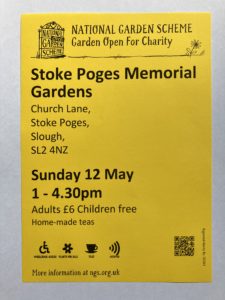
Campbell Park turns 40!
Campbell Park in the heart of the city turns 40 on 4th May 2024, and to celebrate this milestone birthday The Parks Trust have rounded up 40 facts about the city’s central park!

Discover more about the public art located in this 100-acre park, be surprised at the famous faces who have visited, and learn about the diverse landscape and history.
40 facts about Campbell Park
- Campbell Park was named after Jock Campbell who was the first chair of the Development Corporation, the organisation responsible for designing and building Milton Keynes.
- The build of Campbell Park started 1975 and after 9 years was officially opened in 1984.
- The outdoor amphitheatre can hold events for up to 5,000 people.
- Historic England awarded Campbell Park Grade II status in August 2020 due to its historic interest and innovative architectural design.
- Campbell Park is the largest 20th Century formal urban park in UK, totalling about 100 acres.
- Before the park was created, the land was farmland and only a single agricultural building stood in the valley near the north-western corner.
- A Woodland Ridge was part of the original landform in this area but was planted with trees to create a woodland in the late 1970’s. Trees include Silver Birch, Oak and Norway Maples.
- By coppicing the hazel in the Woodland Ridge to let light in, it encourages snowdrops in Winter, followed by swathes of primroses, crocuses and daffodils. Bluebells and cowslips will then appear and, once Summer arrives, you may see wild strawberries.
- Onwards and Upwards by sculptor Robert Koenig was commissioned in 2010 to celebrate the retirement of the Trust’s then chairman John Duggan and was created as a representation of the growth and development of both the park and the city. It was carved from a single piece of eight-metre-high sweet chestnut and installed in August 2011.
- The viewing mound at the top of the park is called the Belvedere and was created from spoil from the shopping centre. It has shrunk over time as the soil has compacted.
- The Light Pyramid is an electric beacon lit for national occasions; it was installed in 2012 in time for HM The Queen’s Diamond Jubilee. The previous crow’s nest beacon was removed after being struck by lightning twice and is now housed at MK Museum.
- The Milton Keynes Rose created by the artist Gordon Young in 2013, features a calendar of days represented as a series of 106 stone pillars arranged around a geometric design of a flower in the granite.
- The Parks Trust’s sheep graze Campbell Park between January and March. The herd of up to 160 sheep ‘mob graze’ as the big heard makes it easier to be seen by dog walkers.
- The meadows in Campbell Park are mown, and the cuttings removed once a year to keep the nutrients down. This removal of nutrients helps suppress the grasses, enabling wildflowers to thrive. The hay is used to feed sheep and cattle over the Winter.
- The City Gardens were completed in the 1980’s. It was extensively planted and is more formal than rest of the park. City Gardens West is the Hanging Gardens around the steps by Chain Reaction, City Gardens East is by the pond near the Cricket Pitch.
- Tree species that can be found in the City Gardens include Monkey Puzzle, Dawn Redwood, Tibetan Cherry and Black Locust trees. These are specimen trees that are not native to the UK but are part of a beautiful collection of trees from around the world.
- Campbell Park was transferred to the care of The Parks Trust when it was set up in 1992.
- Campbell Park connects with Midsummer Boulevard, leading from the park through the middle of the city to the railway station at its western end. This means the park is aligned to watch the rising sun of the summer solstice from the Belvedere.
- The area is formed largely of Oxford clays, which dip south-east towards the chalk hills to the east and south.
- The cricket pitch was completed in 1993 with the wicket constructed to the same specification as Lords and Edgbaston international cricket pitches.
- International cricket stars such as Shane Warne, the Waugh brothers, Monty Panesar, Darren Gough and Malcolm Marshall have all played at Campbell Park.
- In 2005 the UK record T20 score was set at Campbell Park by Northants, who scored 224 for 5, off their 20 overs. It is still Northants third highest total in the competition.
- Until their roots interfered with drainage pipes, cricket bat willows could be found near the cricket pitch. These trees are grown specifically so the wood can be made into cricket bats. The first bat ever made from these trees can be found in Campbell Park Cricket Pavilion.
- Wildlife such as badgers, foxes, green woodpeckers, jays and fieldfare are all found regularly in this diverse park. Squirrels are often seen jumping from tree to tree throughout the year.
- The trees that can be found within the circular benches dotted around the park are Hornbeam. The green Spring/Summer leaves and the bronze crinkled Autumn/Winter leaves provide year-round cover and shelter for lots of small creatures.
- Campbell Park is home to 12 pieces of public art. The most recent addition is Leda and the Swan relocated from Willen Lake and installed in its new home in 2022.
- The Fanzone for The Rugby World Cup in 2015 was hosted in Campbell Park and welcomed over 20,000 rugby fans.
- HRH Prince William, The Duke of Cambridge was welcomed by The Parks Trust to the Milton Keynes Rose in Campbell Park, as part of a special visit to celebrate the city’s 50th birthday in 2017.
- The park has hosted numerous temporary art installations, often working with MK Gallery with contemporary pieces ranging from bells placed in some of the oak trees, to a bird box trail to growing a field of wheat!
- Many famous faces have performed in Campbell Park from Jools Holland to Rag’n’Bone Man, Rick Astley and UB40!
- World Record Attempts have taken place in Campbell Park, most recently in 2023 the longest line of food cans was achieved totalling 102,447 cans for MK Foodbank.
- Milton Keynes International Festival has called Campbell Park home since 2010 with the festival being held every two years (except for two held at Willen Lake in 2014 & 2016).
- Chain Reaction was installed in the park in 1992 and was commissioned to end the first phase of Milton Keynes’ creation as a new city.
- Campbell Park stretches all the way from the city centre to the Grand Union Canal. The canalside at Campbell Park is home to the park’s only living sculpture, Circle Dance by Clare Wilks.
- Every Summer the park hosts hundreds of events and activities including community events like India Day:MK, Milton Keynes Pride Festival, MK Filipino Festival, Art in the Park to name just a few!
- There is an off-road cycle track. Installed in 2019, the track was created because of increasing popularity and demand (at all levels) regarding off-road cycling.
- The city’s bridleways run through and around Campbell Park, and every year the park hosts organised horse rides by EnduranceGB who use the park to start off on the 80km of bridleways around the city!
- In 2014 Campbell Park hosted the World Cup Cyclo-Cross Championships. Over 20,000 cycling fans enjoyed seeing world class riders during the weekend event.
- National cycle route 51 runs through the middle of the park and connects Oxford to the Suffolk coast!
- Original plans for Campbell Park discussed having an ambitious national sculpture museum and park which had the support of Henry Moore! Other ideas included two golf courses and an international conference centre.
-ENDS-
For more information, contact Johnny Englishby on 07918 304361
About The Parks Trust
Established as a charity in 1992 The Parks Trust expertly cares for over 6,000 acres of green space in Milton Keynes including river valleys, ancient woodlands, lakes, parks, and landscaped areas along the city’s grid roads.
In addition to managing and developing local landscapes, the charity’s staff and volunteers also work hard to support local wildlife and biodiversity, provide valuable facilities for park users, deliver extensive education programmes, and connect communities through events and activities.
In most towns and cities, parkland is owned by the local authority, but Milton Keynes’ founders were pioneers and decided to do things differently. Their vision was to create a new town where the parkland and landscapes would be protected forever, by a charity that was separate from local government. Doing so would ensure that, as the new town grew, its green spaces would never be compromised or required to fight for funding.
The Parks Trust was given a 999-year lease on a total of 4,500 acres of Milton Keynes and an endowment of property valued at £20m when it was set up. Returns on these carefully managed investments generate the primary source of income required to fund the charity’s wide-ranging work today and forever.
As Milton Keynes grows, so does The Parks Trust. Each year, the charity takes on new green spaces and endowments from developers and ensures that all new areas of the city benefit from the same quality of inspiring, connected landscape.


